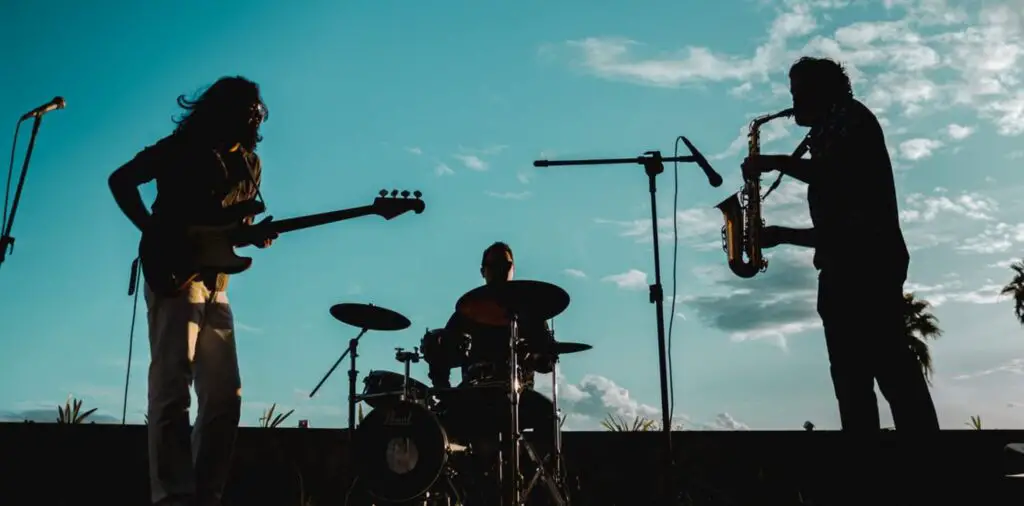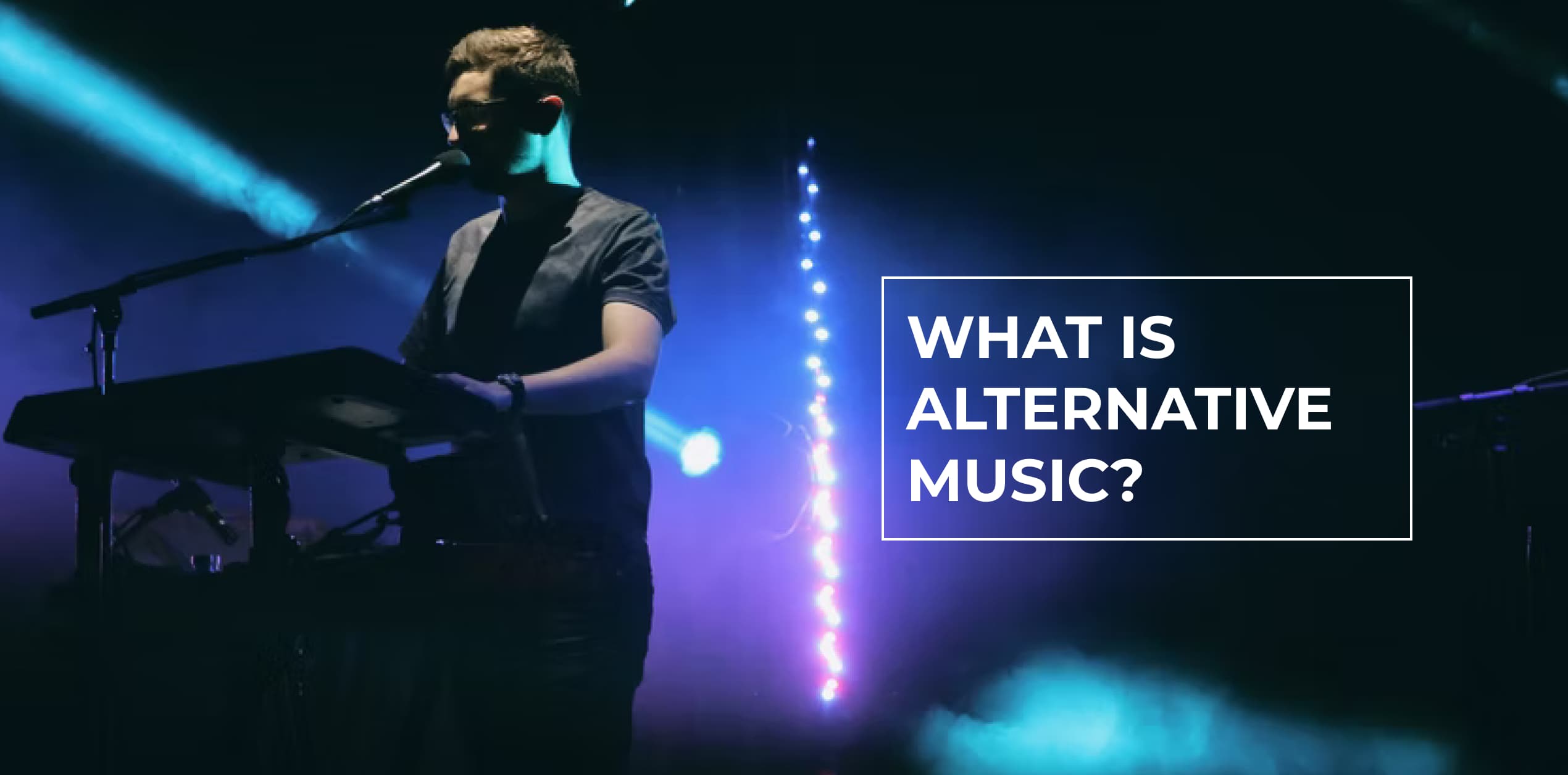So, what is alternative music? Music made by performers outside the musical mainstream is considered more varied, unique, or complex than most popular music (such as classic rock, gothic rock, pop, hip-hop, or alternative country). Independent record labels frequently market it.
It’s not rock music; it’s not pop music; it’s alternative rock. The genre also contains a plethora of subgenres, ranging from hardcore alternative to garage alternative. While the genre appears challenging to categorize, alternative music remains one of the most popular forms of music alternative genres.
People have regarded alternative rock as resistance to mainstream society’s commercialism throughout history, dating back to the punk rock era. The original alternative scene was an alternative to prominent musicians of the time, which often meant that participants of the alternative scene did not want or pursue big label marketing. Some examples of alternative music are :
- Once in a Lifetime – Talking Heads (1981)
- People Are People – Depeche Mode (1984)
- Smells Like Teen Spirit – Nirvana (1991)
- You Oughta Know – Alanis Morissette (1995)
Alternative rock music as a whole does not have distinct musical styles. A desire to liberate the underground alternative music scene united the alternative artists. Throughout the 1980s, alternative bands began to play in small venues, recorded for small independent labels, and established their fan base by word of mouth.
What Is Indie Alternative Music?

Indie rock is a subgenre of rock music that emerged in the 1970s in the United States and the United Kingdom. Originally used to denote independent record labels, the phrase became connected with the music they created and was used interchangeably with alternative rock or “guitar pop-rock” at first.
Grunge music and punk rock artists in the United States and Britpop bands in the United Kingdom and some alternative countries emerged into the mainstream throughout the 1990s. The term “alternative” lost its original counter-cultural connotation. The term “indie rock” became connected with other alternative artists and genres that maintained their independence in the music industry.
In the early 2000s, a new generation of many alternative bands broke into the mainstream, playing a stripped-down, back-to-basics form of guitar rock. Four bands from these settings achieved commercial success: The Strokes, The White Stripes, The Hives, and The Vines. In the early 2000s, emo entered mainstream media as well.
By the end of the decade, the proliferation of indie bands had been referred to as an “indie landfill,” with the term “Landfill Indie” being used by some critics in 2020 as a sub-genre for a certain type of 2000s indie band, similar to how Britpop is used for British alternative bands from the 1990s.
What Is Alternative Music Genre?
In today’s society, alternative music is considered a genre. Alternative music is distinct from many other types of music in that it does not concentrate on a certain collection of sounds. On the other hand, alternative music has a strong sentiment or subject and can use any type of sound to achieve it. Alternative music genres include alt-rock, grunge, and alternative pop.
The word “alternative” was coined in the late 1970s to describe Punk Rock, which was judged too “foreign” to fit into any existing musical classifications. Some individuals consider Alternative Music a unique genre, while others believe it is merely another term for non-mainstream music.
On the other side, mainstream audiences dislike it. Despite its modest prominence, alternative music has a committed fan following. Alternative music is more experimental than other genres since it does not have to appeal to people.
What Does Alternative Music Sound Like?
Between 1991 and 1996, alternative rock was a mainstream music style founded on distorted guitars and rooted in generational dissatisfaction that dominated and altered rock. When Nirvana’s first major-label record, “Smells Like Teen Spirit,” became a nationwide smash, it catapulted the band into the mainstream. Older, more challenging, and even anarchic movements and a prior decade of do-it-yourself college rock all gained a showy beachhead on mainstream radio.
If you listen to these musical genres, you will notice many similarities between them, making it difficult to distinguish one from the others. If you search for grunge music, you will find that some believe that it began in the early 1990s and is largely linked with bands like Nirvana and Soundgarden.
Grunge is a subgenre of alternative rock that focuses on bass and guitar riffs. Grunge music has a slower tempo and frequently sounds industrial and heavy. People frequently connect grunge to alternative music. People classify grunge music as a blend of heavy metal, rock, and alternative elements.
Comparing grunge to alternative rock, you may define the latter as a wide genre. Hard rock and heavy metal music are examples of alternative rock. Some may dispute that alternative music is at the top of the alternative music chart, but I believe it is at the top of the alternative music list in terms of popularity.
How to Make Alternative Music?

Alternative music has been around for quite some time. It isn’t easy to define the phrase precisely because it’s meant so many various things since its inception. Alternative music, loosely defined, is an effort to characterize any music that does not exactly fit into the popular sound of a certain era.
And, as streaming services have grown in popularity, the typical listener now has access to more music than ever before, most of it outside of current trends and unlikely to make the charts.
Songwriting
Although there is a lot of fantastic music on the market based on the reproduction of ancient songs and songs without lyrics, that is a topic for another day. Assume you want to produce a song with lyrics; your first step would be to write the lyrics. This is a crucial phase, and you should write the song based on your inspiration or a song that affects the listener.
Arranging
We start with the arrangement after a song has been written. People underestimate the importance of attempting at this point. Your music mustn’t grow monotonous. You don’t want to hear your verse or chorus again and over. The cleverness comes in knowing how to arrange the verse and chorus to produce a decent build-up before your verses while making it less repetitious.
Tracking
When you’ve decided on an arrangement, you should then begin tracking. This is when your concept becomes a reality, and you record numerous instruments to use in the song. This process necessitates appropriate equipment to obtain the highest quality recording for the final song.
Editing
Because of technological advancements, this stage has grown significantly. You utilize electronic tools to edit the music, erase any errors, adjust the vocal, and cure any instrument faults. If you adequately record the music, editing may be minimal. However, if there are flaws with the recording, editing might work miracles.
Mixing
Making music is as complex as developing an algorithm to construct bots like the new xenobiotic. Mixing takes a lot of skill, and many current musicians opt to focus only on mixing and generating fresh versions of previously released music. It may be as basic as altering the level of several recordings or as sophisticated as adding effects.
Mastering
A song may be created in segments in multiple studios using diverse equipment. Mastering is the final stage following mixing to make these disparate components cohesive and a part of the same record. Mastering engineers are often in charge of this. They run the tracks through comparable mastering equipment and modify them to create a cohesive finished album.
Final Words
The Alternative music genre evolved as a result of musical innovation. It is distinguished not by a special collection of sounds but by the mood or topic it expresses. Rather than being attributed to a certain genre, their distinct style and passion distinguish alternative bands. Alternative music is frequently experimental rock music, integrating elements from several genres.
Alternative rock bands often have a distinct sound that distinguishes them in their own right. Alternative music is not just popular; it has also developed into its genre. Alternative Music bands combine several genres to create their distinct Alternative sound, including Electronic Music and Alternative Rock, which many fans like.
Despite being less popular than other types of music, alternative music maintains a committed fan following. Alternative music does not have to appeal to the people, allowing for the creation of more experimental sounds.
